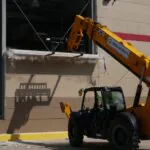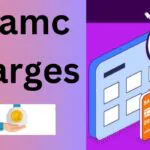The challenges and solutions in urban transportation focus on efficiency, convenience and sustainability for commuters. Adding bus routes, expanding roads and implementing digital upgrades are among the ways municipalities can improve urban transport networks.
Keeping public transit affordable also helps, including regulating low fares and fostering competition between legacy and ride-sharing operators. Sustainable transport initiatives are another important way to reduce a city’s environmental footprint.
Congestion
As cities grow and motorization spreads, the demand for roadway capacity grows. The traditional response to congestion is increasing road size and adding new lanes – an expensive solution.
Congestion is often linked to recurring demand surges caused by work, shopping and weekend trips. The resulting peaks cause a significant amount of delay.
Adding capacity to the street network, optimizing bus routes and completing road construction or modernization projects can help reduce traffic congestion. Widening highways can also ease congestion by shifting traffic away from city streets.
Traffic congestion reduces commuter efficiency and erodes the quality of life in cities. It also increases operating costs for trucks and causes freight to be delayed. Smart mobility solutions can offer cost-effective solutions to congestion, while improving efficiency and convenience for commuters and businesses. These include signal coordination, queue management and entrance ramp metering. If deployed at high levels, these operational treatments could lead to delay savings of more than 500 million hours per year across urban areas.
Longer Commutes
Long commutes are a major challenge to urban transportation, as they cut into valuable time for work, family, and social activities. Longer commutes also contribute to high levels of stress, which can lead to obesity, depression, and other health problems.
One way to reduce long commutes is to expand transit options, such as bus, train, tram, and light rail services. However, to make the best decisions about these investments, transportation planners need accurate data on actual travel patterns. Using Massive Mobile Data analytics helps planners identify where the most common origin-destination pairs are during peak commute hours and where the largest first-mile/last-mile transit gaps are located. Visit for รถบรรทุกส่งของ.
Congestion also often drives traffic onto local road networks in an attempt to escape gridlock, which adds wear-and-tear to city streets and increases the potential for crashes. Investing in cycling infrastructure and encouraging cycling as an alternative mode of transport can help address these challenges and improve the quality of life for people who live in urban areas.
Increasing Transit Ridership
People will ride a transit system if it enables them to make the trips they need to do in an amount of time and money that works for them. A key is network design, which ensures that the system’s routes deliver useful destinations to as many people as possible.
During the COVID-19 pandemic, ridership plummeted due to city lockdowns and shelter-in-place orders. However, it’s returning to normal levels in most cities, although some still struggle to attract the numbers they had before the pandemic.
To increase ridership, local governments need to align their capital investments with a region’s transit needs and focus on increasing the usefulness of their networks. This means improving bus rapid transit routes that can move large numbers of riders with minimal stops, and boosting capacity to handle the morning and afternoon peaks. Incentives such as point systems can also encourage consumers to choose transit over auto travel. Ride-hailing services and shared e-scooters are another attractive option, as they allow consumers to use their own vehicles but get the convenience of public transportation.
Smart Mobility
With the emergence of smart technology, AI, and machine learning, there is now a wide array of sustainable transportation solutions that can be implemented in urban locations. These systems can help reduce vehicle congestion, air pollution, and greenhouse gas emissions while also easing traffic flows, providing access to public transit, safeguarding neighborhoods, and improving overall safety.
These systems can include shared mobility services (such as ride hailing and e-scooters), automated vehicles, and smart parking. They can also incorporate MaaS platforms that integrate urban transport modes and services into one app for planning, booking, payment, and customer service. MaaS platforms have gained significant interest from municipalities, transport companies, and technology startups alike due to the dual benefits for consumers and cities.
However, these new models are not a solution for all transportation problems on their own. A multifaceted ecosystem approach is necessary to ensure that these systems put consumer priorities first and work together seamlessly to deliver the best possible outcome.






Comments closed.